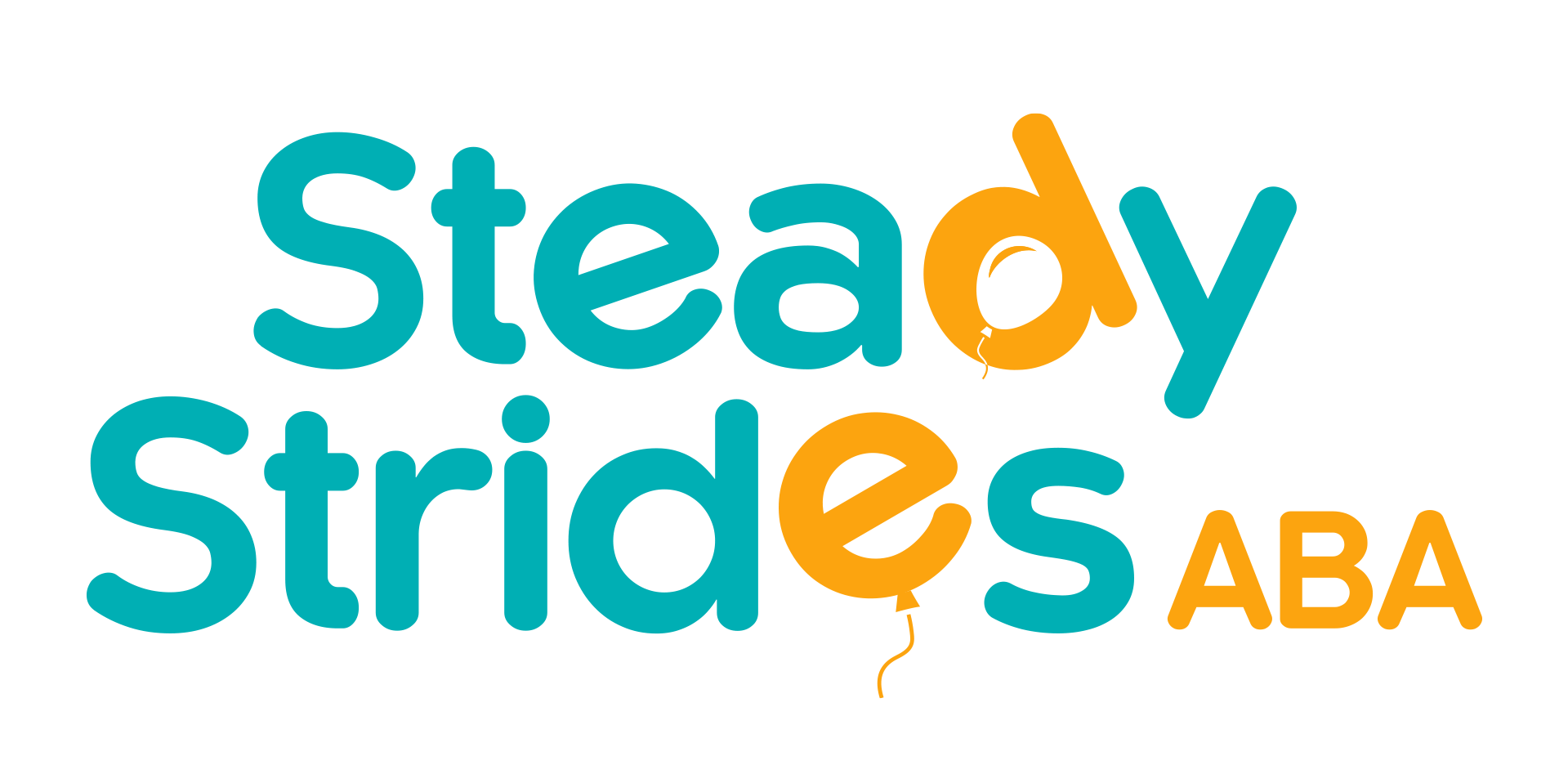Understanding ABA Therapy
Applied Behavior Analysis (ABA) therapy is a widely recognized and scientifically validated approach for treating individuals with Autism Spectrum Disorder (ASD). This section provides an introduction to the basics of ABA therapy and explains its significance in the lives of those with autism.
Basics of ABA Therapy
ABA therapy is a set of principles that applies techniques based on learning theories to improve social, communication, and learning skills through positive reinforcement. In practice, ABA therapy involves breaking down complex behaviors into smaller, teachable components and systematically reinforcing desired behaviors while reducing unwanted behaviors.
The therapy is highly individualized and tailored to each person's needs. It includes various ABA therapy techniques such as Discrete Trial Training (DTT), Pivotal Response Training (PRT), and Natural Environment Training (NET). These techniques are used to teach a variety of skills, including but not limited to, speech, self-care, motor development, and social interactions.
An integral part of ABA therapy is the role of the Registered Behavior Technician (RBT). An RBT works directly with the individuals receiving therapy under the supervision of a Board Certified Behavior Analyst (BCBA). They are responsible for implementing the ABA interventions and collecting data on the individual's progress.
For those aspiring to become an RBT, it's essential to pass the RBT competency assessment and adhere to the RBT code of ethics. Adequate preparation for the certification can be found in resources like RBT exam preparation.
Importance of ABA Therapy
ABA therapy has been considered the gold standard treatment for individuals with ASD. Its importance lies in the evidence-based practices that support significant improvements in communication, social relationships, play, self-care, and learning. ABA interventions have been shown to enhance overall quality of life for individuals with autism and their families.
Through consistent and structured intervention, ABA therapy helps individuals with ASD to:
- Increase language and communication skills
- Improve attention, focus, and social skills
- Decrease problem behaviors
- Learn to generalize skills in different environments
The effectiveness of ABA therapy in fostering development and independence is well-documented, making it a critical resource for educators, therapists, and family members of individuals with autism. By emphasizing positive reinforcement and the understanding of behavior patterns, ABA therapy empowers individuals with ASD to reach their full potential.
In summary, ABA therapy is a vital component of the support system for individuals with autism, offering a structured and data-driven approach to learning and development. Its techniques and strategies are integral to the transformative process, leading to life-changing outcomes for many.
Role of Registered Behavior Technician (RBT)
The Registered Behavior Technician (RBT) plays a crucial role in the delivery of ABA therapy, particularly in supporting individuals with Autism Spectrum Disorder (ASD) and related conditions.
Definition of RBT
A Registered Behavior Technician is a paraprofessional who practices under the close, ongoing supervision of a Board Certified Behavior Analyst (BCBA) or a similarly qualified ABA therapist. The RBT is primarily responsible for the direct implementation of ABA therapy techniques designed and supervised by the BCBA. The certification requires passing the RBT competency assessment and adhering to the RBT code of ethics, which maintains the standard of practice for delivering ABA services.
Responsibilities of an RBT
The responsibilities of an RBT are diverse and include the following key tasks:
- Implementing Behavioral Treatment Plans:
Carrying out intervention plans that are tailored to each client's needs, as developed by the supervising BCBA.
- Data Collection:
Recording data on the client's progress and responses to therapy to inform future treatment decisions. Types of data tracked include frequency, duration, intensity, and type of behaviors.
- Assisting with Behavior Management: Utilizing various strategies to manage challenging behaviors and help individuals learn new skills and improve communication.
- Communication:
Regularly communicating with the therapy team, including BCBAs, parents, and other professionals, to ensure consistent and effective treatment.
- Maintenance of Professional Conduct:
Adhering to ethical guidelines as outlined in the
RBT code of ethics, maintaining confidentiality, and displaying professionalism in all interactions.
- Preparation for Sessions:
Setting up the environment for ABA sessions and ensuring all materials and resources are ready for use.
- Continuous Learning: Engaging in ongoing training and professional development opportunities, such as RBT exam preparation, to enhance their skills and stay updated with the latest ABA practices.
The role of an RBT is integral to the ABA therapy process, providing essential support that enables individuals with ASD to achieve their full potential. Through their dedicated efforts, RBTs contribute significantly to the life-changing outcomes that ABA therapy can facilitate.
Implementing ABA Techniques
Applied Behavior Analysis (ABA) therapy involves a variety of techniques that are designed to encourage positive behaviors, teach new skills, and improve communication in individuals with Autism Spectrum Disorder (ASD).
ABA Therapy Techniques Overview
ABA therapy techniques are evidence-based strategies that have been proven to be effective in the treatment of ASD. The techniques focus on understanding the individual's behavior in the context of their environment and then applying interventions to alter their behavior for the better. Some of the core techniques include:
- Discrete Trial Training (DTT):
A structured method of teaching that breaks down skills into smaller, manageable parts.
- Pivotal Response Training (PRT): Focuses on pivotal areas of a child's development, such as motivation and response to multiple cues, which are crucial for broader learning.
- Natural Environment Training (NET): Encourages learning in the individual's natural environment through play and daily activities.
- Functional Communication Training (FCT):
Teaches alternative communication strategies to reduce challenging behaviors.
- Task Analysis: Involves breaking down complex tasks into smaller, teachable steps.
These techniques are employed by ABA therapists, including Registered Behavior Technicians (RBTs), to tailor interventions that meet the unique needs of each individual with autism. RBTs play a crucial role by implementing these strategies under the supervision of a Board Certified Behavior Analyst (BCBA).
For those pursuing a career as an RBT, it is imperative to have a thorough understanding of ABA techniques and to complete the RBT competency assessment to demonstrate their skills and knowledge in the field.
Behavior Management Strategies
Behavior management strategies are crucial components of ABA therapy that focus on reducing problematic behaviors and reinforcing desirable ones. These strategies include:
- Positive Reinforcement:
Rewarding the individual with something they find enjoyable following a desired behavior, thereby increasing the likelihood of the behavior occurring again.
- Negative Reinforcement: Removing an aversive stimulus following a desired behavior to increase its occurrence.
- Differential Reinforcement:
Reinforcing a specific positive behavior while withholding reinforcement for undesirable behaviors.
- Antecedent-Based Interventions (ABI): Modifying the environment to prevent the occurrence of challenging behavior before it starts.
Implementing these strategies requires careful observation and data collection by the RBT to determine the effectiveness of the interventions. It is also essential for RBTs to adhere to the RBT code of ethics to ensure the highest standard of practice.
For RBTs and ABA professionals, ongoing training and RBT exam preparation are vital for staying up-to-date with the latest ABA therapy techniques and behavior management strategies. By mastering these approaches, RBTs can make a significant impact on the lives of individuals with autism, contributing to the overall goals of ABA therapy for autism.
Data Collection in ABA Therapy
Data collection is a critical component of Applied Behavior Analysis (ABA) therapy, as it provides the foundation for understanding the progress of individuals with Autism Spectrum Disorder (ASD) and measuring the effectiveness of ABA therapy techniques.
Importance of Data Collection
The importance of data collection in ABA therapy cannot be overstated. It allows Registered Behavior Technicians (RBTs) and other ABA professionals to make evidence-based decisions regarding the direction and intensity of therapy. By systematically recording information about the individual's behavior, therapists can identify patterns, track changes over time, and adjust interventions as needed. This data-driven approach is essential for ensuring that every facet of ABA therapy is tailored to the individual's unique needs and is contributing to their overall growth and development.
Moreover, data collection reinforces accountability and helps therapists adhere to the RBT code of ethics, ensuring that practices are ethical, effective, and in the best interest of the individual receiving therapy. It also plays a significant role in preparing for the RBT competency assessment and RBT exam preparation, as understanding and applying data collection methods are key competencies for certification.
Types of Data Tracked
In ABA therapy, several types of data are tracked to monitor the individual's progress and the effectiveness of interventions.
| Data Type | Description |
|---|---|
| Frequency | Counts how often a specific behavior occurs |
| Duration | Measures the length of time a behavior lasts |
| Intensity | Assesses the severity or force of a behavior |
| Latency | Tracks the time between a given stimulus and the start of a behavior |
| Quality | Evaluates the subjective aspects of a behavior |
These data types allow therapists to construct a comprehensive profile of the individual's behavior and are essential for goal-setting, planning, and evaluating the success of therapy. Frequency and duration are especially useful for tracking behaviors that need to be increased or decreased, such as verbal communication or instances of self-stimulatory behavior. Intensity and latency provide additional context for understanding the behaviors in question, while quality data helps to evaluate less tangible aspects such as the individual's emotional response or level of engagement.
Collecting and analyzing these different types of data enables the ABA therapy team to adjust their ABA therapy techniques for maximum benefit. It also facilitates effective communication among team members, ensuring that everyone involved in the individual's care is informed and working towards common objectives.
In conclusion, data collection is a fundamental practice in ABA therapy that underpins the scientific approach of the discipline. It informs the therapy process from assessment to intervention, and is crucial for monitoring the progress of individuals with ASD.
Collaborating in ABA Therapy
Collaboration is a cornerstone of effective Applied Behavior Analysis (ABA) therapy, involving multiple stakeholders working together to support individuals with Autism Spectrum Disorder (ASD).
Teamwork in ABA Therapy
Teamwork within ABA therapy is essential for delivering comprehensive care. The team typically includes Behavior Analysts, Registered Behavior Technicians (RBTs), the individual receiving therapy, their family members, and other professionals such as occupational therapists, speech-language pathologists, and educators.
Each team member brings unique expertise and perspective to the therapy process. Behavior Analysts create and oversee the treatment plan, while RBTs are tasked with implementing this plan directly with the client. They use a range of ABA therapy techniques to encourage positive behavior changes and skill acquisition.
The family plays a critical role by providing insights into the individual's needs, reinforcing the skills learned during therapy sessions at home, and supporting the overall goals of the therapy. Collaboration ensures that therapy strategies are consistent across different settings, enhancing the likelihood of generalization and maintenance of skills.
Effective teamwork is built on several pillars:
- Clear Roles and Responsibilities:
Each team member understands their specific duties, which are often outlined in the
RBT code of ethics.
- Shared Goals: All parties agree on the therapy objectives for the individual with ASD.
- Open Communication: Regular meetings and updates keep everyone informed.
| Stakeholder | Role |
|---|---|
| Behavior Analyst | Develops treatment plan, oversees progress |
| RBT | Implements interventions, collects data |
| Family | Reinforces skills, provides insight |
| Other Professionals | Contribute specialized expertise |
Communication in ABA Sessions
Clear and consistent communication is vital in ABA sessions to facilitate understanding and cooperation among all participants. RBTs, who work closely with clients, need to effectively communicate with Behavior Analysts to report on progress and any challenges encountered.
Communication strategies within ABA sessions may include:
- Regular Check-Ins: Scheduled meetings to discuss the individual's progress and any necessary adjustments to the therapy plan.
- Progress Notes: Written records that document what happens during each therapy session, which are essential for tracking progress and making data-driven decisions.
- Family Training:
Educating family members on ABA principles and techniques so they can effectively support their loved one's development.
- Visual Aids and Supports: Tools that help convey information clearly and can be particularly useful when working with individuals with ASD.
To ensure that communication is effective, RBTs must also be adept at nonverbal cues and active listening. They must be sensitive to the communication needs and preferences of individuals with ASD, adapting their approach as necessary.
For individuals preparing to become RBTs, understanding the importance of teamwork and communication is vital. Resources like RBT competency assessment and RBT exam preparation can help prospective RBTs develop these essential skills.
In summary, collaboration in ABA therapy is a dynamic and multifaceted process. It requires the concerted effort of all team members, effective communication channels, and a commitment to the shared goal of improving the quality of life for individuals with ASD. Through teamwork and communication, ABA therapy can truly transform lives.
Progress Monitoring and Evaluation
An integral part of Applied Behavior Analysis (ABA) therapy involves the consistent tracking of a client's progress and the ongoing evaluation of the interventions being used. This process is vital to ensure that therapy goals are being met and that adjustments to the strategies can be made in a timely manner.
Tracking Progress in ABA Therapy
In ABA therapy, progress tracking is a systematic approach to observing, measuring, and recording the behaviors of individuals receiving therapy. This is done using a variety of data collection methods, which are essential to making informed decisions about the direction of the therapy. Registered Behavior Technicians (RBTs) play a pivotal role in this process as they are often responsible for the day-to-day data collection that informs treatment plans.
To effectively monitor progress, RBTs and therapists use both qualitative and quantitative measures. This might include frequency counts, duration records, and interval sampling, among others. The data collected provides a comprehensive view of how an individual is responding to therapy and allows for the customization of techniques to better suit the individual's needs.
| Data Type | Description | Purpose |
|---|---|---|
| Frequency | How often a behavior occurs | To measure changes in how often a behavior happens |
| Duration | The length of time a behavior lasts | To assess increases or decreases in the length of time a behavior is exhibited |
| Interval Sampling | Observation of whether a behavior occurs during a specific interval | To gain an overall estimate of the behavior's occurrence |
For more detailed information on tracking progress, refer to the guide on ABA therapy for autism.
Assessing Effectiveness of Interventions
The effectiveness of ABA interventions is assessed by analyzing the data collected over time. This evaluation is critical as it informs whether the aba therapy techniques being applied are facilitating the desired change in behavior. ABA professionals, including RBTs, review this data in collaboration with behavior analysts to determine the success of specific interventions.
Key indicators of effective interventions include a decrease in maladaptive behaviors and an increase in desired skills and behaviors. When interventions are not yielding the expected outcomes, the therapy team must reassess and adjust the strategies being used.
To maintain a high standard of practice, RBTs adhere to the RBT code of ethics, which guides the ethical considerations for evaluating and adjusting interventions. Additionally, RBTs must demonstrate their proficiency in these areas through the RBT competency assessment and continue to refine their skills through resources like RBT exam preparation.
Through diligent tracking and assessment, ABA therapy becomes a dynamic and responsive process aimed at achieving the best possible outcomes for individuals with autism. This ongoing cycle of monitoring and evaluation is essential for the continuous improvement of therapy techniques and ensuring that each individual's path towards progress is as effective and efficient as it can be.













